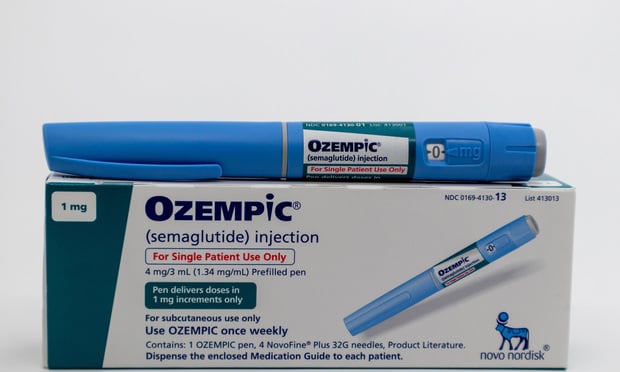The health insurance industry is more complex than ever thanksto the rapid erosion of the traditional health care model, a surgein high-deductible plans and a major shift toward consumeraccountability.
|According to the Kaiser Family Foundation, the averagedeductible climbed to $1,217 in 2014—an increase of 47 percent injust five short years. In addition, Commonwealth Fund researchersfound that premiums for families with employer-funded insurancerose 73 percent while premium contributions by employees soared by93 percent in the last decade.
|The avalanche of health care choices and responsibilities hasforged a new world for consumers who aren't only facingever-increasing deductibles, but also tasked with understanding agrowing number of services and accounts. Consumers need to betterunderstand all of their options, become more educated about thebenefits they choose and stay fully informed about what theirdecisions mean for their health (and their finances).
|Combatting a Common Misconception
|As we continue to ask individuals to shoulder more financialresponsibility for their health care needs, there's a fundamentalmistake we first need to address as an industry: The belief thatindividuals understand health care as it stands today. Theydon't.
|Between deductibles, out-of-pocket limits, co-insurance, healthsavings accounts, flexible spending accounts, and all the otherterms we throw at them, the typical consumer doesn't understand theins and outs of their health care policy. While they might know ifsomething is covered or not, they still aren't 100 percent surewhat all of the numbers in their bill, health statement and/orexplanation of benefits documentation actually mean.
|This lack of understanding leads to a state of consumerconfusion, which will only intensify as changing health careeconomics make them increasingly accountable for health caredecisions that directly impact their wallet. So what can we do tohelp consumers achieve clarity?
||Taking a page from the retail and financial services playbooks,the health care industry needs to put the consumer first andrethink its approach. Forward-thinking organizations have drivenmany advances over the last several years to embrace the concept ofhealth care consumerism—and, as an industry, we need to continuethat momentum toward consumer-driven health care.
|Answering the call for consumer-centric health care experiencesstarts with four core components:
|1) Welcome consumer perspective
|Health plans, benefits administrators and employers all need toproactively seek out consumer feedback. Going beyond deliveringwhat a consumer “might” want or need and finding out what questionsthey need answered, which resources will resonate, and whichformats are easiest and most logical for each consumer will be thetrue consumer-driven health care nirvana.
|Consider hosting quarterly lunch-n-learns to invite directemployee feedback, discuss any potential misunderstandings andencourage ongoing dialogue. Consumers need to be heard, and waitinguntil the next open enrollment period nullifies many of theeducational opportunities. We need to ask consumers what tools theyneed, analyze which resources are accessed most and dig into themost logical way to help guide consumers and give them theconfidence to make informed health care choices.
|2) Focus on the financial ramifications
|Consumers are now bombarded with wellness and incentiveprograms, as well as new types of health care accounts—from healthsavings and flexible spending accounts to health reimbursementarrangements. The interaction between all of these pieces can beextremely overwhelming for the average consumer. Health plans andadministrators must connect the dots for all of these programs andmake sure consumers can get the information needed to make prudentfinancial decisions.
|Understanding the amount that they owe for a service, as well asthe alternatives that could save them money, is absolutely criticalas consumers take on more of the health care costs. Eventually,health care decisions will be a day-to-day financial experience.Core elements already embraced by consumers in the personal/retailbanking industry like debit cards and online bill pay will becomecommon in the health care evolution.
|For instance, most consumers know that they need to have enoughfunds in their checking account before swiping their debit card atthe grocery store. The same fundamental concepts must be applied totheir financial health care accounts. The win-win will come whenconsumers truly understand what they need to do and the best way topay to get the proper level of care—weighing the economics beforemaking health care decisions. When consumers start to ask if theyreally need that MRI or if the X-ray is sufficient, we know we'reon the right track.
||3) Deliver continued education
|With more financial responsibility comes a higher expectation ofcontinuous, exemplary support. Consumers are demanding more fromthe health care system than ever before—from financial tools,educational resources and reimbursement visibility to 24/7,personal support and advisory services just a click or phone callaway. Give consumers a wide range of mechanisms to get fast,complete answers to their questions (be it a nurse hotline,provider cost/review tool, or rapid access to service/costcalculators) so they feel empowered in the months/years ahead.
|4) Support the consumer-first evolution
|Benefits brokers and administrators can gain a sharp competitiveedge by proactively shaping the consumer experience. Consumers'questions and needs will surely change and evolve over time. Theconstant is that consumers value organizations that thinkdifferently and deliver an unparalleled consumer experience. AllyBank, Amazon, Uber—there are so many examples of cross-industrydisruptors with this common foundation.
|The health care market is tough. Many flip insurance every yearand brokers change all the time. Provide educational programs,comprehensive support and customer service models that help yourclient—they will come back. Give them simplicity and ease ofaccess. When consumers and employers feel empowered, you will earnloyalty and realize the advantage of increased retention.
||Guiding an evolution
|Economics will increasingly drive consumer behavior as thehealth care industry continues to change in the coming years. Thedynamic between health care providers and consumers will furthershift as financial pressures rise. If we, as an industry, focus onempowering consumers and sharing helpful information, consumerswill quickly become more educated, embrace their role in healthcare decision-making and better understand the potentialtradeoffs.
|The CDHC evolution is upon us, and there's no stopping theconvergence of health care and banking. Consumers need to becomeself-motivated and receive the education needed to make properhealth care decisions.
|Meanwhile, employers and health plans need to empower consumersto confidently take control of their health care spending. Givingconsumers easy and direct access to educational tools they need tomake sound choices will also improve the user experience, createongoing engagement opportunities and drive consumer loyalty. Beready for informed consumers who ask more questions and take anactive role in financially driven health care choices.
Complete your profile to continue reading and get FREE access to BenefitsPRO, part of your ALM digital membership.
Your access to unlimited BenefitsPRO content isn’t changing.
Once you are an ALM digital member, you’ll receive:
- Critical BenefitsPRO information including cutting edge post-reform success strategies, access to educational webcasts and videos, resources from industry leaders, and informative Newsletters.
- Exclusive discounts on ALM, BenefitsPRO magazine and BenefitsPRO.com events
- Access to other award-winning ALM websites including ThinkAdvisor.com and Law.com
Already have an account? Sign In
© 2024 ALM Global, LLC, All Rights Reserved. Request academic re-use from www.copyright.com. All other uses, submit a request to [email protected]. For more information visit Asset & Logo Licensing.








